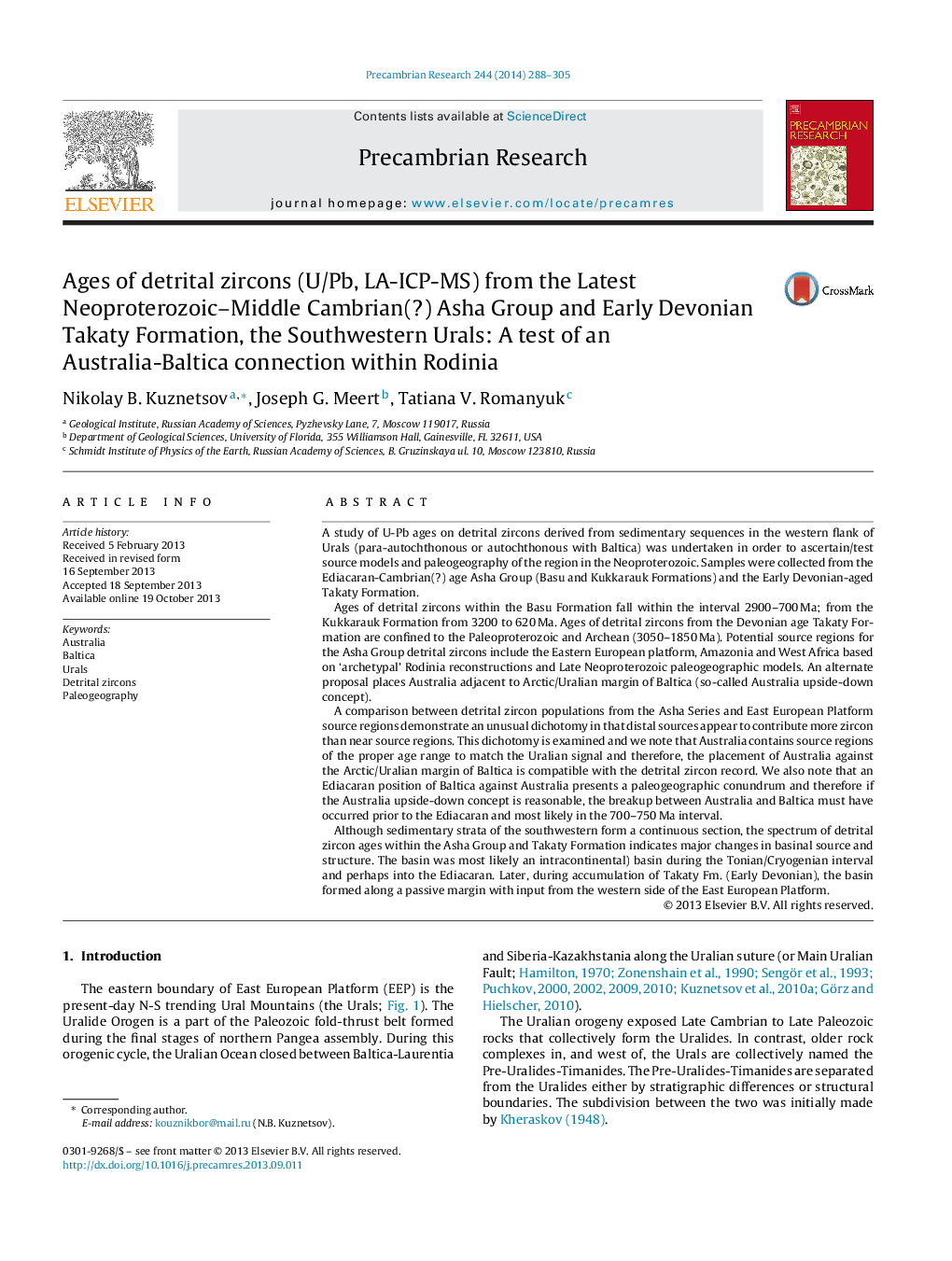| کد مقاله | کد نشریه | سال انتشار | مقاله انگلیسی | نسخه تمام متن |
|---|---|---|---|---|
| 4723053 | 1639630 | 2014 | 18 صفحه PDF | دانلود رایگان |

• Detrital zircon populations from the Ediacaran-Cambrian Asha Group (Urals) were examined.
• A dichotomy in abundances of zircons from near-source/distal sources within Baltica was revealed.
• Placement of Australia adjacent to Baltica in the Late Neoproterozoic (∼700–750 Ma) provides an alternative source region for the Uralian zircons.
A study of U-Pb ages on detrital zircons derived from sedimentary sequences in the western flank of Urals (para-autochthonous or autochthonous with Baltica) was undertaken in order to ascertain/test source models and paleogeography of the region in the Neoproterozoic. Samples were collected from the Ediacaran-Cambrian(?) age Asha Group (Basu and Kukkarauk Formations) and the Early Devonian-aged Takaty Formation.Ages of detrital zircons within the Basu Formation fall within the interval 2900–700 Ma; from the Kukkarauk Formation from 3200 to 620 Ma. Ages of detrital zircons from the Devonian age Takaty Formation are confined to the Paleoproterozoic and Archean (3050–1850 Ma). Potential source regions for the Asha Group detrital zircons include the Eastern European platform, Amazonia and West Africa based on ‘archetypal’ Rodinia reconstructions and Late Neoproterozoic paleogeographic models. An alternate proposal places Australia adjacent to Arctic/Uralian margin of Baltica (so-called Australia upside-down concept).A comparison between detrital zircon populations from the Asha Series and East European Platform source regions demonstrate an unusual dichotomy in that distal sources appear to contribute more zircon than near source regions. This dichotomy is examined and we note that Australia contains source regions of the proper age range to match the Uralian signal and therefore, the placement of Australia against the Arctic/Uralian margin of Baltica is compatible with the detrital zircon record. We also note that an Ediacaran position of Baltica against Australia presents a paleogeographic conundrum and therefore if the Australia upside-down concept is reasonable, the breakup between Australia and Baltica must have occurred prior to the Ediacaran and most likely in the 700–750 Ma interval.Although sedimentary strata of the southwestern form a continuous section, the spectrum of detrital zircon ages within the Asha Group and Takaty Formation indicates major changes in basinal source and structure. The basin was most likely an intracontinental) basin during the Tonian/Cryogenian interval and perhaps into the Ediacaran. Later, during accumulation of Takaty Fm. (Early Devonian), the basin formed along a passive margin with input from the western side of the East European Platform.
Figure optionsDownload as PowerPoint slide
Journal: Precambrian Research - Volume 244, May 2014, Pages 288–305